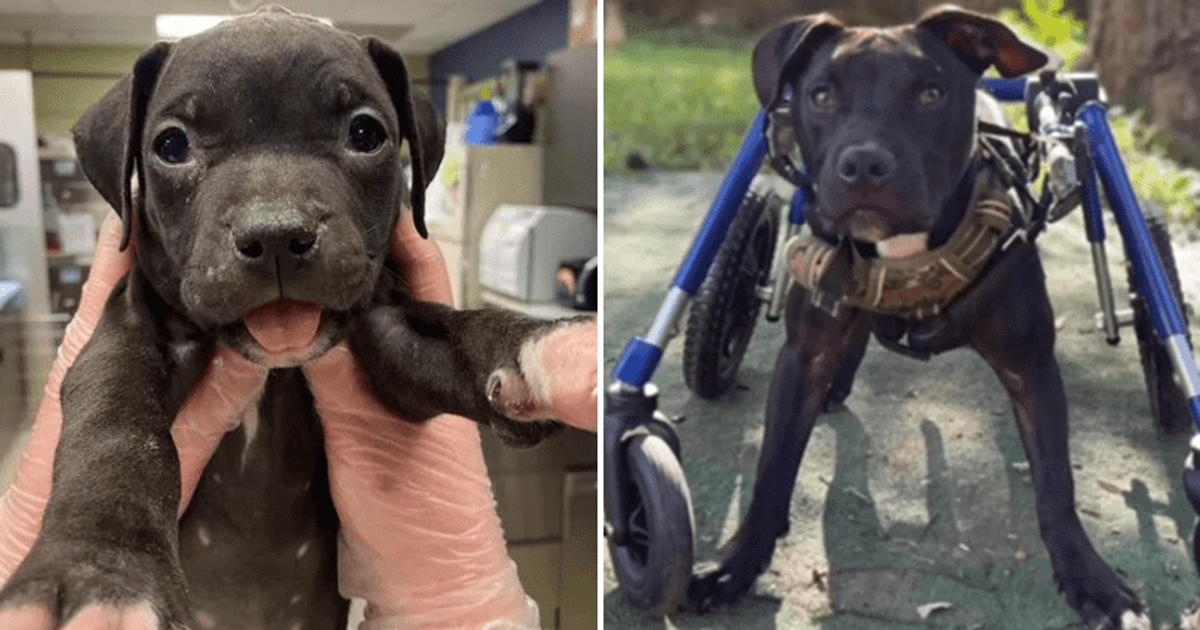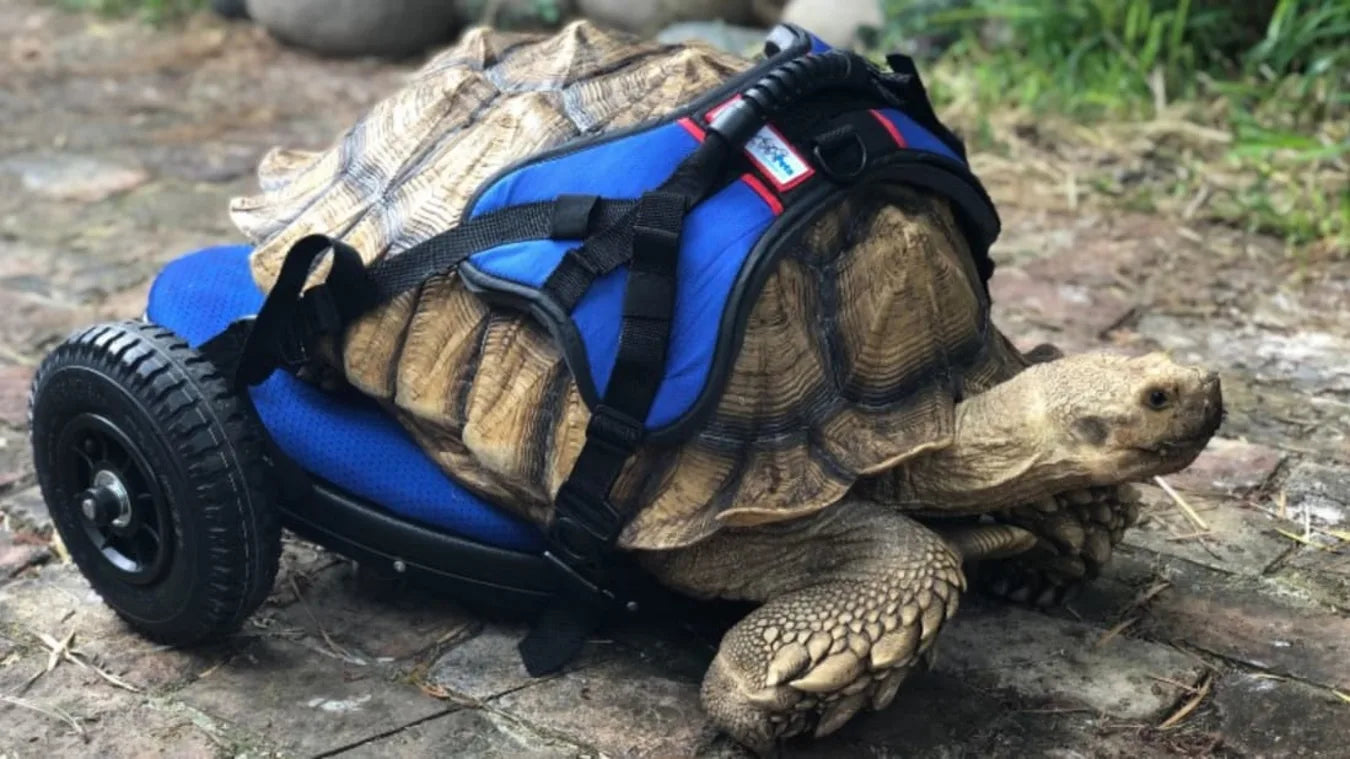Sit Down Dog Wheelchairs

How Pet Splints Are Vital to Heal Your Dog from Injury?
Veterinary professionals may recommend or utilize splints for various reasons to aid in healing animals. To begin with, splints are usually applied below the stifle (knee) on the hind leg or below the elbow on the front leg. They provide protection and support to an injured area while keeping the leg at a normal walking angle.

The purpose of a well-fitting splint is to prevent movement of an injured area while providing comfort and support to weakened or unstable joints. The support of a splint allows weight-bearing of the affected limb while preventing sores and other potential trauma to the injured area or joint during the healing process. For proper treatment, our Walkin' Fit Adjustable Splint is sold exclusively to pet professionals. Accordingly, speak with your veterinary professional to see if your pet is a candidate for a splint.
Forelimb Common Conditions that May Benefit from Splints:
- Osteoarthritis of the carpal or metacarpal joints
- Degenerative Joint Disease (DJD)
- Polyarthritis
- Soft tissue injuries to carpal or metacarpal tendons/ligaments
- Carpal hyperextension
- Carpal or metacarpal joint instabilities or malformations
- Brachial plexus or radial nerve damage injuries
- Neurological conditions causing knuckling of paw
- Post-surgical protection
Hind Limb Common Conditions that May Benefit from Splints:
- Osteoarthritis of the tarsal or metatarsal joints
- Degenerative Joint Disease (DJD)
- Polyarthritis
- Soft tissue injuries to tarsal or metatarsal tendons/ligaments
- Achilles tendon injury
- Tarsal hyperextension
- Tarsal or metatarsal joint instabilities or malformations
- Neurological conditions causing knuckling of paw
- Post-surgical protection
If your pet is a candidate for a splint, it will require extra care and attention on your part as the pet owner. Speak to your veterinarian for guidance on choosing the right pet splint for your dog's leg injury. Therefore, monitoring the splint makes for a well-informed pet owner.
How Splints Help Your Dog
- Splints keep pets mobile and protected while healing.
- They're comfortable to wear. A dense foam lining and comfort pads protect and cushion the paw.
- Splints allow your dog to heal while keeping the paw in the correct position.
- Provide joint support and stability to injured legs in limping dogs
- Designed to allow the paw and leg to breathe with separated touch fastener straps on the front of the splint.
- To customize splint fit, or if the pet falls between sizes, cut and use an adhesive foam sheet for improved fit.
- Prevent paw knuckling - splint keeps the paw in the correct position and helps avoid additional injury from scrapping or dragging feet.
Important Tips & Tricks:
Do Not Allow Your Dog to Chew on Splint
Wearing a splint is a new feeling for a dog. Always supervise your dog while wearing a dog leg brace. An anxious dog may chew on straps or the splint itself because they aren't used to it yet. If your dog is a chewer, the splint can always be sprayed with an anti-biting spray to deter nervous chewing.
Keep Your Dog's Splint Dry
Splints must remain clean and dry to prevent moisture from sitting against the skin. If the splints get wet, allow them to fully dry before reapplying.
Other Night-Time Protection
Give your dog a break from their splint. In the evening and at night, remove the splint to let your dog's paw breath. For night time leg protection use a Hock Hugger or Wrist Hugger to lightly support the joint.
Pets with Sensitive Skin

Check your pet's toes daily for any swelling. If the toes become cool or puffy, it's possible that the splint has been applied too tightly and is impairing the limb's circulation and needs to be removed.
Tip: To avoid over tightening when putting the splint, tighten the bottom and top strap before the center strap. Starting at the top and working your way down can lead to progressive over-tightening.
If your pet develops chafing of the skin area due to rubbing of the splint, you may have to add some adhesive foam for added cushioning. Baby powder may help soothe the affected area. As always, contact your Veterinarian with any immediate concerns.
How to Get the Perfect Splint Fit
To customize the fit of your dog's splint (without the custom price), you can use a foam insert or talk to your vet about an adjustable splint! This adhesive-backed foam can be cut to fit any shape and even includes templates for the most commonly used shapes.

Use Foam for:
- Skinny dog leg: place foam inside sides of splint for a snug fit
- Paw won't sit flat: build up the paw from underneath, cut and stack foam under the foot until paw is resting comfortably.
- Prevent rub points and protect the leg or paw
- Swollen limbs: whether swollen from injury or arthritis, if your dog's joints are swollen purchase a size larger and adjust fit using foam.

In summary, splints can be vital to the healing process for our beloved pets. They provide protection, support, and comfort to weakened or unstable areas. Often they are a long-term solution to a degenerative problem, where otherwise, a pet may struggle to walk. Finally, consult with your veterinary professional to discuss the benefits a splint may offer your pet.









